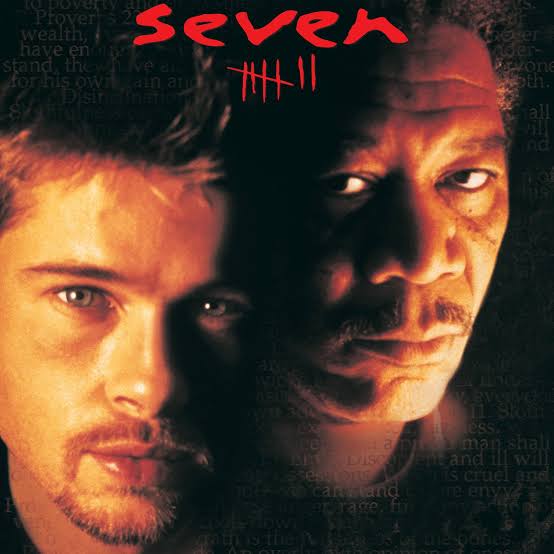David Fincher’s Se7en meticulously builds up tension, culminating in an ending that is as shocking as it is inevitable. John Doe, played chillingly by Kevin Spacey, orchestrates his own demise with precision. His embodiment of the seven deadly sins culminates in Wrath, the final and most devastating sin, forcing Detective Mills (Brad Pitt) into becoming a pawn in his twisted vision of justice. The film’s nihilistic conclusion leaves the audience disturbed yet in awe of its thematic execution.
John Doe: A Calculated Mastermind
The brilliance of Se7en’s ending lies in John Doe’s meticulous planning. By delivering himself to the police, he lures Mills and Somerset (Morgan Freeman) into his endgame. His confession lacks remorse; instead, it reveals a man convinced of his moral superiority. The infamous “What’s in the box?” scene cements his legacy—Doe not only embodies the sins, but ensures his final act of Wrath is completed posthumously. His death isn’t a defeat; it’s his ultimate triumph.
The Ultimate Manipulation
John Doe’s carefully constructed crime spree was never about avoiding capture—it was about being caught at the right time. The horror of the climax is not just in Tracy’s fate, but in how John Doe strips Mills of his free will. The slow realization, the agonizing tension, and Mills’ final pull of the trigger serve as proof of Doe’s total control. The killer wins, even in death, making Se7en a tragedy as much as a thriller.
The Seven Sins, Completed
From the beginning, John Doe plays the long game, punishing sinners according to his own distorted morality. The ending solidifies his belief system: Gluttony, Greed, Sloth, Lust, Pride, Envy, and finally, Wrath. He sacrifices himself to prove his point—becoming Envy by coveting Mills’ life and family, then provoking Mills into Wrath. It’s a cyclical act of violence, ensuring that sin begets sin. By the time the final gunshot rings out, the audience realizes Doe has succeeded in his twisted crusade.
A Victory in Death
John Doe’s death is not a downfall but a calculated necessity. The revelation that he murdered Tracy Mills (Gwyneth Paltrow) and took her unborn child is horrifying, but it is the reaction it elicits from Mills that completes his masterpiece. In forcing Mills to embody Wrath, Doe proves his ideology—that sin is omnipresent and unavoidable. The last scene, with Somerset’s resigned voiceover, leaves no room for catharsis, only a grim acceptance of Doe’s dark philosophy.
The Final Lesson
Unlike many films where justice prevails, Se7en ends on a note of despair. John Doe doesn’t seek redemption or escape; he seeks to teach a lesson. His final words—soft, assured, and victorious—linger long after his execution. “She begged for her life… and for the life of the baby inside her.” In those words, he ensures Mills’ transformation. The horror isn’t just that Doe kills Tracy—it’s that he corrupts Mills permanently. He has created another sinner, proving that even the righteous are vulnerable to darkness.
The True Villain
John Doe may be the film’s antagonist, but Se7en suggests that evil is not confined to a single man—it’s systemic, ever-present, and inescapable. The world Fincher presents is bleak, where the lines between justice and vengeance blur. Doe’s plan is so intricately designed that even his own demise plays into his hands. The ultimate horror of Se7en is not just Doe’s crimes, but that his philosophy is disturbingly persuasive. The final scene—Somerset walking away as the sun sets—leaves us questioning whether Doe was truly defeated at all.
Final Thought
John Doe’s character is one of the most chilling in cinematic history, not just because of his crimes, but because of his conviction. His execution of the seven sins is flawless, making Se7en’s ending one of the most haunting in modern cinema.
